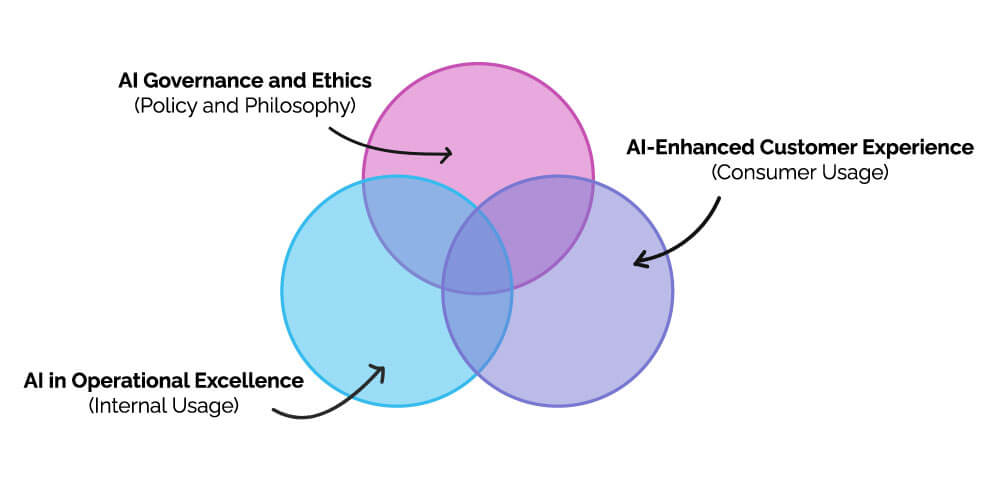Building an AI-Enabled DMO Part 1: The Pillars of AI Integration
March 12, 2024
The following is the first part of a two-part blog series and focuses on the pillars that should be at the core of integrating AI into your DMO. Part two provides a circular model that can be implemented to help ensure the smooth adoption of AI tools.
The AI terrain is one of constant evolution, and DMOs must become AI-enabled to not just keep pace, but set it. Before DMOs can do that, they must take the first steps to integrate AI tools into their workflow. But with numerous AI platforms at our fingertips, it can be difficult to determine in which direction those first steps should go. However, like most journeys, following a simple roadmap can guide you on a path to reach new heights.
Aligning AI to your journey
Successfully incorporating AI into your organization involves three overlapping core pillars that work together to deliver outcomes. These pillars are:
AI Policy and Philosophy: This pillar encompasses the principles, guidelines, and ethical standards that govern the use of AI within your organization. It includes considerations like AI ethics, regulatory compliance, privacy laws, and the development of policies for responsible AI deployment. You can view Madden’s AI policy here to help get you started.
AI Internal Usage: This covers how AI is used to enhance internal processes and operations. It involves AI applications for employee productivity, process automation, predictive maintenance, data analytics for decision-making, and AI in supply chain management.
AI Consumer Usage: This sector represents the application of AI in improving the customer experience. It could include personalized marketing, customer service chatbots, recommendation engines, and AI for enhancing customer interactions and services.

As illustrated above, these pillars easily intersect and highlight key areas of focus for organizations when building an AI plan. These intersecting areas can include topics like ethical AI use for internal process improvement while maintaining compliance and privacy, ensuring customer-facing AI applications adhere to ethical guidelines and privacy laws, and leveraging AI to bridge internal efficiency and external customer satisfaction. At the center of it all is the strategic integration of AI that aligns ethical governance, enhances internal operations, and elevates the customer experience, reflecting a holistic, AI-informed organizational strategy.
up next
We lay out a plan to integrate AI and bring these pillars to life within your DMO: Building an AI-Enabled DMO Part 2: The Roadmap.



